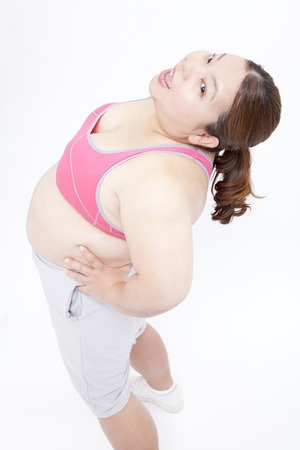Are you an injury waiting to happen ?
Are you at risk of injury?- chances are if you were you probably wouldn’t know it. Lets go over the biggest risk factors for injury. We can break it down into two types extrinsic and intrinsic risk factors.
Extrinsic risk factors are those which are in our environment eg. a soccer player twisting his/her knee in a pothole. Often we are unable to control these and there is sometimes a “freak” element involved.
Intrinsic risk factors are those which exist within us – internally eg. Poor strength or flexibility leading to a hamstring tear. It is these risk factors that we are mostly interested in improving as far as your injury risk is concerned
 Lets explore these closer with the most important ones first
Lets explore these closer with the most important ones first
1. Previous history of injury – simple. If you have injured yourself before you are way more likely to injure yourself again in the same spot or in a slightly different area.
2. Overweight – being over weight affects your body’s movement quality and efficiency. Head down to the local soccer club on the weekend and watch some of the players run – look at the difference between a fitter poerson and an overweight one. More weight = heavier load on the body and more compensatory patterns.
3. Strength – a recent study of all the strength based trials ever conducted in the world revealed that if you are stronger you are 40% better off at preventing injury – thats alot huh ? Strength training includes weights, body weight training, neuromuscular training, balance etc
4. Movement quality/technique – if you are a poor mover or your technique within your chosen activity is poor then be prepared to breakdown alot quicker than those who practice being more efficient. Often your technique or movement quality is heavily influenced by the adaptations our bodies incur from the things we do everyday eg. sitting at a computer all day creates stiffness in the neck and mid back – a nightmare for any sport involving postural control such as golf or running.
5. Sedentary lifestyle – so you like lounging around? People who sit massively increase their risk of type 2 diabetes and associated heart disease and other illness. Also the impact on muscle strength and flexibility is a disaster.
6. Flexibility – or lack of it. Tightness and loss of joint movement naturally occurs as we get older. Without an exercise program or regular movement to address this your body will struggle to move well
7. Poor advice/coaching – ever decided to start an exercise program with a personal trainer and ended up so sore that you couldn’t walk for a week ? Whilst you should be praised for starting a program the saying “too much too soon” is a real problem for many and usually ends up with an injury that stops you for a much longer period,
8. Weak core – your core muscles are those responsible for stabilising your spine and pelvis while you perform day to day activities and/or sport. Usually those with a weak core have poor posture and are at a greater risk of injury due to extra load on the body to compensate for this weakness
The easiest way to overcome these factors is to head in to the clinic for a physical screening – this is a session designed to identify where you are at risk and then place forward a plan to address it.
You will be more likely to exercise safely and effectively
Give reception a buzz on 55787155 for more info

